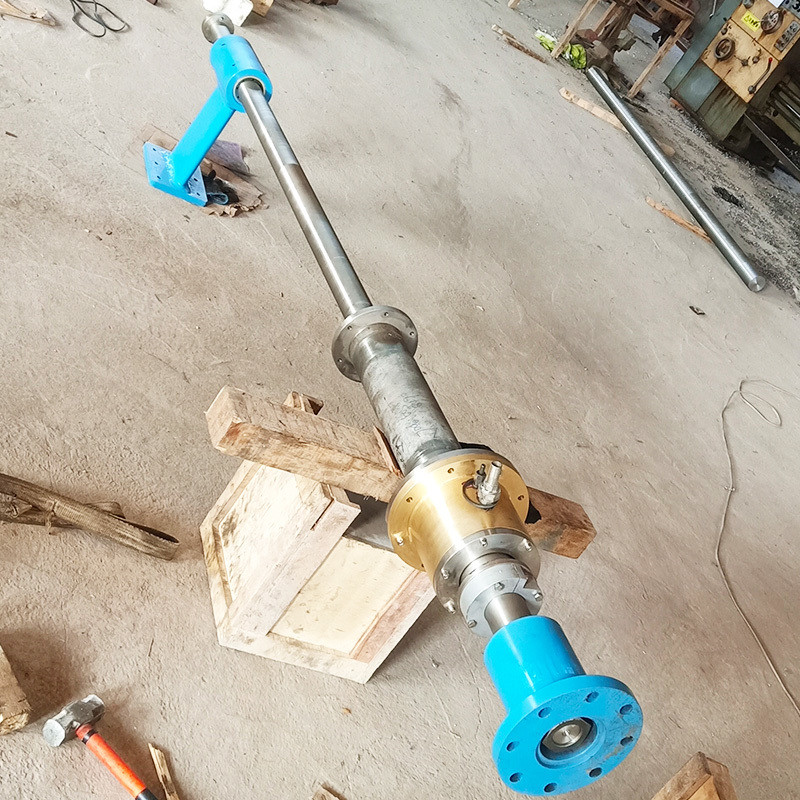The Science Behind Propeller Shaft Design: A Comprehensive Exploration
Release Time:
Jun 18,2025
The Science Behind Propeller Shaft Design: A Comprehensive Exploration Table of Contents 1. Introduction to Propeller Shaft Design 2. Importance of Propeller Shaft in Marine Transportation 3. Fundamental Principles of Propeller Shaft Design 4. Materials Used in Propeller Shaft Construction 5. Engineering Design Techniques for Optimal Performance 6. Key Factors Affecting Pr
The Science Behind Propeller Shaft Design: A Comprehensive Exploration
Table of Contents
- 1. Introduction to Propeller Shaft Design
- 2. Importance of Propeller Shaft in Marine Transportation
- 3. Fundamental Principles of Propeller Shaft Design
- 4. Materials Used in Propeller Shaft Construction
- 5. Engineering Design Techniques for Optimal Performance
- 6. Key Factors Affecting Propeller Shaft Performance
- 7. Maintenance and Care for Propeller Shafts
- 8. Future Trends in Propeller Shaft Design
- 9. Conclusion
- 10. FAQs on Propeller Shaft Design
1. Introduction to Propeller Shaft Design
The **propeller shaft** serves as a critical component in marine vessels, connecting the engine to the propeller and facilitating the transmission of power. This essential link plays a significant role in determining the operational efficiency and performance of a ship. In this section, we will introduce the fundamental concepts of propeller shafts and their importance in marine engineering.
2. Importance of Propeller Shaft in Marine Transportation
Propeller shafts are vital for the propulsion of various marine vessels, including cargo ships, yachts, and ferries. Their design directly influences several performance aspects, including:
- **Power Transmission**: They provide an efficient means of transferring engine power to the propeller.
- **Vibration Damping**: A well-designed shaft minimizes vibrations, enhancing comfort for crew and passengers.
- **Durability**: Quality materials and design ensure longevity and reliability in various marine environments.
Understanding the importance of propeller shafts is essential for anyone involved in marine engineering and design.
3. Fundamental Principles of Propeller Shaft Design
The design of a propeller shaft is governed by several fundamental engineering principles, including:
3.1 Torque Transmission
The ability of a propeller shaft to transmit torque is paramount. Engineers must consider the maximum torque the shaft will encounter during operation to ensure it withstands these forces without failing.
3.2 Bending and Torsional Stresses
Propeller shafts are subjected to both bending and torsional stresses. A well-designed shaft can manage these stresses effectively, preventing deformation and ensuring operational integrity.
3.3 Alignment and Balancing
Proper alignment and balancing of the propeller shaft are crucial for optimal performance. Misalignment can lead to excessive vibration, wear, and potential failure.
4. Materials Used in Propeller Shaft Construction
The choice of materials for propeller shafts significantly influences their performance, durability, and weight. Common materials include:
4.1 Steel
High-strength steel is often used due to its excellent fatigue resistance and ability to withstand high torque loads.
4.2 Aluminum Alloys
Aluminum alloys offer a lightweight alternative, improving fuel efficiency while maintaining sufficient strength.
4.3 Composite Materials
Innovative composite materials provide corrosion resistance and reduced weight, making them increasingly popular in modern designs.
5. Engineering Design Techniques for Optimal Performance
Various engineering techniques are employed to enhance the performance of propeller shafts:
5.1 Computer-Aided Design (CAD)
Utilizing CAD software allows engineers to create precise models and simulations, ensuring optimal design before physical prototyping.
5.2 Finite Element Analysis (FEA)
FEA helps in predicting how the propeller shaft will react under various loads and conditions, identifying potential failure points before manufacturing.
5.3 Precision Machining
High-precision machining is essential for ensuring the dimensions and tolerances of the shaft are maintained, contributing to its overall reliability.
6. Key Factors Affecting Propeller Shaft Performance
Several factors can impact the overall performance of a propeller shaft:
6.1 Diameter and Length
The diameter and length of the shaft directly affect its strength and flexibility. A balance must be struck between these dimensions to optimize performance.
6.2 Surface Finish
A smooth surface finish reduces drag and friction, improving efficiency and reducing wear.
6.3 Operating Environment
The marine environment poses unique challenges, including corrosion and biofouling. Selecting appropriate materials and coatings can mitigate these issues.
7. Maintenance and Care for Propeller Shafts
Proper maintenance is crucial for the longevity and performance of propeller shafts. Key maintenance practices include:
7.1 Regular Inspections
Routine inspections allow for the early detection of wear, corrosion, or misalignment, preventing more extensive damage.
7.2 Lubrication
Ensuring proper lubrication reduces friction and wear, enhancing performance and lifespan.
7.3 Cleaning
Regular cleaning prevents the buildup of marine growth and debris, ensuring optimal efficiency.
8. Future Trends in Propeller Shaft Design
As technology advances, several trends are shaping the future of propeller shaft design:
8.1 Increased Use of Automation
Automation in manufacturing and design processes is leading to greater precision and reduced production costs.
8.2 Sustainable Materials
There is a growing trend towards using sustainable materials that reduce the environmental impact of marine transportation.
8.3 Enhanced Computational Modeling
Improvements in computational modeling techniques allow for more accurate predictions of shaft performance under varied conditions.
9. Conclusion
The design of propeller shafts is a complex interplay of engineering principles, materials science, and innovation. Understanding the science behind their design can lead to enhanced performance, reliability, and efficiency in marine transportation. As technology continues to evolve, we can expect exciting advancements in propeller shaft design that will further enhance the capabilities of marine vessels.
10. FAQs on Propeller Shaft Design
1. What is a propeller shaft, and what role does it play in a ship?
A propeller shaft connects the engine to the propeller, transmitting power and enabling propulsion.
2. What materials are commonly used for propeller shafts?
Common materials include high-strength steel, aluminum alloys, and composite materials.
3. How do engineers ensure the reliability of propeller shafts?
Engineers employ techniques like CAD, FEA, and precision machining to design reliable shafts.
4. What maintenance practices are essential for propeller shafts?
Regular inspections, lubrication, and cleaning are crucial for maintaining propeller shafts.
5. What trends are shaping the future of propeller shaft design?
Automation, sustainable materials, and enhanced computational modeling are key trends influencing future designs.
By understanding these aspects of propeller shaft design, we can appreciate the engineering marvels that propel our vessels across the seas.
Keywords:
More information



